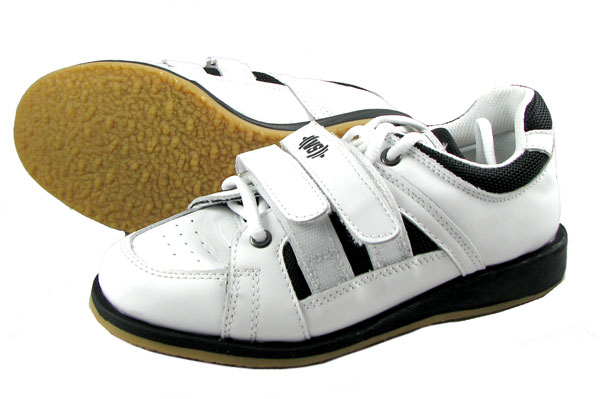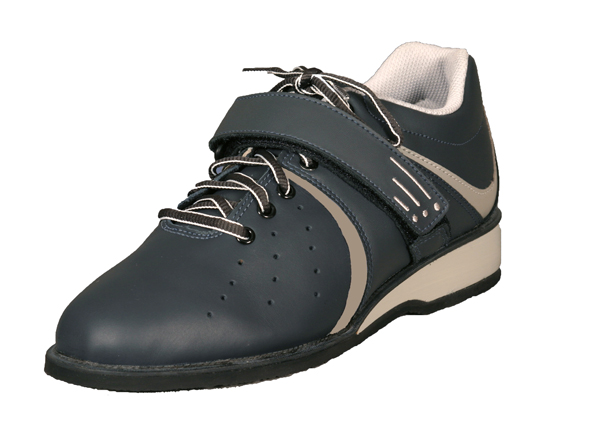Weightlifting Shoes
Weightlifting shoes are specially designed for the purpose of weightlifting, just like how other sport shoes help in increasing the athlete’s performance. It even provides safety and stability for the lifter while he does training with weights. Weightlifting shoes are strong and flexible, since they need to bear the weight of the sportsman as well as the weight he lifts. In addition, these shoes have a proper grip and balance for the athlete to be stable.
Weightlifting shoes are somewhat different from regular sports shoes, though many people don’t really understand the importance of the specialized features they embrace. These shoes are carefully designed following two main elements in particular – the method used by the weightlifter and the starting posture of the weightlifter when lifting the barbells.
These specifically designed weightlifting shoes have many advantages, such as it can give you enough stability by having a raised heel. The raised heel helps the athlete to have a good balance and great bending of the ankle joint when lifting the barbells from the floor. As the shoes are strong and sturdy, it has excellent grip which can prevent the athlete from foot injuries and accidents. Moreover, these weightlifting shoes apply force directly to the weights thereby providing stability to help the athlete lift heavier weights. Besides, it also prevents injuries. In addition, since these shoes have no compressible soles it provides a stable surface and promotes good form and technique for the athletes thereby providing greater balance and control.
Weight lifting shoes can and will make a huge difference in the amount of weight the athlete lifts. Proper postures and weight lifting technique depends on the weight lifting shoes the athlete chooses. There are two fundamental elements of weightlifting technique which has a great impact on creation of the particular weightlifting shoe which is the driving force for evolution in the design of the shoe. Firstly, how the weightlifter moves his body under the barbell. And secondly, the kinematic links during the starting posture of lifting the barbell.
Proper footwear is very important, in particular while lifting free weight. If we are trying to lift weight in a running shoe, it is as if we are lifting when standing on a giant marshmallow. This is because the soles of these shoes will absorb the force and dissipate it in larger amount against the floor which is directed towards the movement of the weight. These air cell shoes reduce the impact shock which will cause repetitive injuries that is associated with running. However, in the weight room the shoe will have to provide efficient transmission of power between bar and ground. With the wrong shoe one can’t lift as much weight as that can be done by using a proper shoe.
Another issue that the lifters face will be the control of the weight and body while standing on an unstable surface. The medium between the feet and the ground is compressible and behaves inconsistently during the rep which alters the pattern of force transmission. That is the delicate points of good technique on the standing exercises are impossible to control. Due to this, there is a high chance of stability loss- induced injury when lifting heavy weights. Weightlifters and power lifters know about these weight lifting shoes since ages; however the purpose was very limited. Till the year of 1970 Chuck Taylor’s, combat boots and even lather oxfords were the shoes that was being used for lifting weights. To perform optimally and to be stable, the weightlifting shoe should be warm and fitting. It should also provide exceptional support and must have the non compressible wedge sole.
A weightlifting shoe is also known as strength training shoes and should be proper for exercise needs. Few things to be remembered while selecting weightlifting shoes include a good grip for the soles. Soles are the lower parts of the shoe which support the foot and touch the ground. The sole’s lower surface is made of treads which is like a tire; the treads here hold the shoe to the surface. They leave a print on the ground when someone walks and the treads of weightlifting shoes will have a good grip to avoid falls and accidents. Materials used in making the sole will be light material like plastic or rubber. However, most of the shoes are made of rubber since it is lightweight and can absorb shock. It can also change the shape easily because it is soft on heals and makes it easy for the feet to wiggle.
Secondly, the fastener should hold on to your feet. A fastener is nothing but the shoe lace and it can also be called as the zip. In weightlifting shoes you can make a choice of zip or a shoe lace, which ever you are comfortable. But remember shoe lace tends to be tighter when compared to the zips and u can’t make the shoe tighter.
Thirdly, the heel should be strong and comfortable. The feet will be in constant motion if a person is doing a lot of lifting which lead to aches and pains by the time he finishes the exercise. One of the sensitive parts of the foot is the heel. Sometimes heel pain occurs after a hard workout. To prevent this, one should use the shoe that will give a strong support for the heel. You can avail this strong support with the help of the hard lining at the back of the shoe which runs till the top and descents to the inner lining of the shoe. On top of this strong support, there will be a soft lining to cushion the heels. This is done by filling it with sponge so that you can get a cushy feeling which also helps in friction.
Fourthly, the upper enclosure should allow ventilation since this part houses the foot. It should be remembered that the feet also sweats like the rest of the body while lifting weights and doing other intense activity. Therefore we should allow it to do so. The enclosure should be of a light material and it should have pores so that we let the feet to breathe.
Fifthly, the insoles should be comfortable under your feet since this is the interior of the shoe. Hence, it is important that we protect the skin surface of the foot. Therefore, it is recommended that you buy weight lifting shoes after good research and advice of the trainer.


